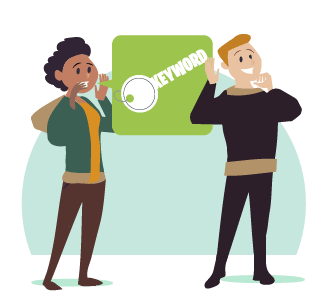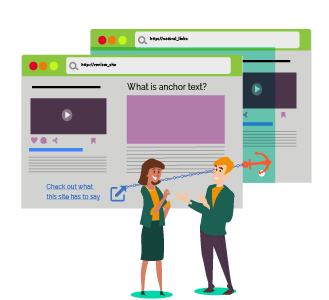If you are a small business which has a local presence, optimising your site for local SEO is one of the easiest things you can do to increase traffic and sales.
With four in five consumers using Google to find local information, optimising for local SEO is hugely important for brands. It’s also an easy way to generate local business.
To put it plainly, if you’re not optimising for local SEO, you are missing out on a lot of opportunities.
If you want your business to remain relevant, competitive and necessary in your local area, local SEO is the key.
For local search to work, however, you need to feed information such as local content, social pages and links to search engines like Google.
Without local SEO, you cannot fully take advantage of the local demand which exists for your products or services.
So, to ensure your website is ranking highly for local searches, we’re taking a deeper look into local SEO. We’ll also show you how to best optimise your pages to reach more people.
What is Local SEO?
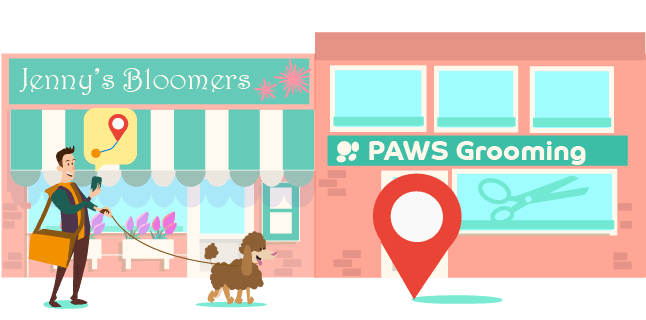
Local SEO refers to the process of optimising your online presence to attract more visitors to your website from relevant search queries in your local area.
Optimising for local SEO allows you to reach more people in a more specific location that’s closer to you. Just as you would optimise your webpages for high organic rankings to reach a wider audience.
This is particularly important for your conversions. When people conduct a local search query, they’re usually doing it with urgency. They’re looking to find a local service or product provider who can assist them right now.
Let’s take a look at an example.
Meet Mike, who lives in central Manchester.
When Mike woke up this morning, he discovered he had a blocked drain. However, Mike’s bus to work will be here in five minutes, and he can’t afford to be late today.
With no time to spare, and no real idea on how to fix a blocked drain, Mike decides to run out the door and catch the bus.
On his bus journey into work, Mike pulls out his mobile phone and searches for ‘drain unblocker in Manchester’.
In his search engine results pages (SERPs), he is presented with a map of his local area. This map shows all the drain unblockers that are local to him.
Underneath the map, he can also see some text listings which display the business names, their reviews, their location and contact details.
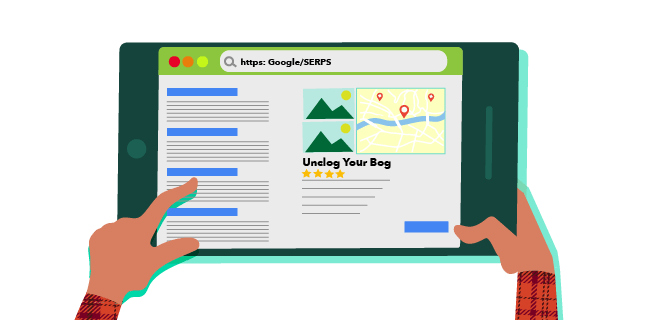
Mike notices a business called ‘Unclog Your Bog’ located just a couple of miles from his home. From the SERP, he is able to call and arrange for a plumber to come round after work and unblock his drains.
Mike is just one example of how local SEO can work to increase a business’ sales, especially if you are a local service provider. Even if you are a product provider or local hospitality business, local SEO is still important. It helps nearby searchers discover your brand.
Why is Local SEO Important?
As I mentioned at the start of this article, four in five consumers are currently using Google to find local information. And search engines have optimised their algorithms to accommodate this.
So, unless you have taken the necessary steps to set up your local SEO, you could be preventing yourself from appearing in lots of search queries, or ranking at all for them.
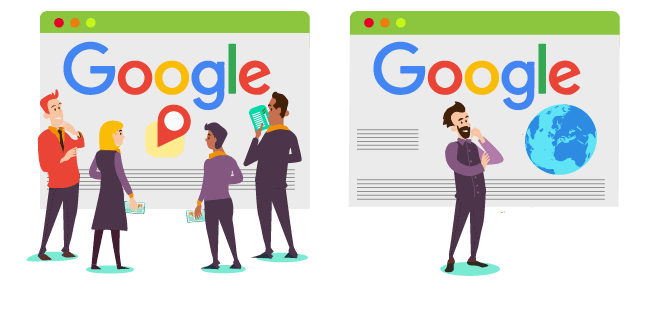
These complex search engine algorithms don’t even prioritise your general SEO rankings. It doesn’t matter if you rank in position one for a keyword. If your competitor has optimised for local SEO, then they will still appear before you in local intent searches.
So, regardless of how your general SEO is doing right now, you need to start thinking local too. Prioritise your local SEO to ensure relevant search queries are being directed to your website.
How to Optimise Your Website for Local SEO: 3 Simple Steps
To get to grips and succeed with local SEO, there are three main things which you need to do: optimise Google My Business; improve on-page SEO; and ensure you are meeting local SEO ranking factors.
Let’s take a detailed look at them below.
Optimising Google My Business
As far as local SEO and search is concerned, Google My Business is the most important tool in your arsenal.
Google My Business is a free tool for businesses and organisations which allows them to manage their digital presence across the search engine. It helps customers to find you and learn more about what you have to offer.
Google’s algorithms will prioritise and share content that it trusts. Of course, there’s no better way to gain their trust than by using their own Google My Business tool. It’s the best way to help your business meet Google’s needs for local SEO.
By being verified as a real, reputable and authentic business, Google will be more inclined to display you in local search results.
Optimising your Google My Business account is simple, and can be done easily by creating a verified page. Make sure you fill out all the information you possibly can.
Other ways of optimising Google My Business include:
- Enabling Google reviews and encouraging customers to leave feedback
- Using Google My Business posts to keep customers up-to-date with new content
- Provide authentic responses to Google reviews
- Specify your location, contact details, opening hours and business address
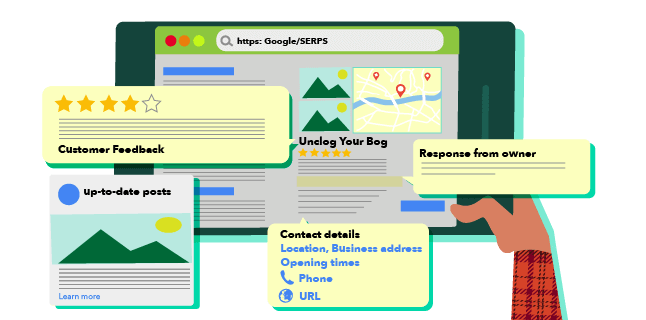
If you have a registered domain, then creating a Google My Business account can be done in a matter of minutes. As with many of Google’s services, everything is controlled from an intuitive user interface. This means you shouldn’t have too many issues navigating the platform.
Using Google My Business has the potential to deliver lots of traffic to your site without too much hard work on your end – not bad for a free service!
Improving On-Page SEO
Taking general on-page SEO aside for one moment. To optimise for local SEO you should be creating location-specific pages. And this can be especially useful if your business has or operates in multiple locations or has more than one unit within a city.
There’s nothing wrong with creating multiple pages which include similar content, so long as the content is relevant to the location in question.
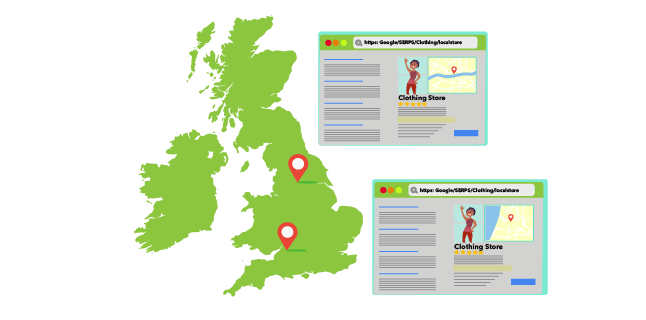
Say for example you operate two clothing stores – one in Leeds and one in Bristol. The content for each page should be somewhat related to the local area, and so you’ll never have exact duplications in content.
You could try talking about where the store is located, where customers can find local parking, and what types of clothing and accessories you stock in each store.
However, it’s important to remember not to ignore your general on-page SEO.
Local SEO and general on-page SEO work hand-in-hand. Together, they ensure your pages are both powerful in substance and optimised for local searches.
On-page SEO is very easy to do, and there are a few simple factors which will affect your organic rankings, including:
- Page loading speeds
- Mobile optimisation
- Page segmentation
- Internal and external linking
- Image optimisation
Incorporating on-page and local optimisation as a part of your overall SEO strategy is vital. It will give you the best chance of reaching a wider audience; both on a local and international level.
Local SEO Ranking Factors
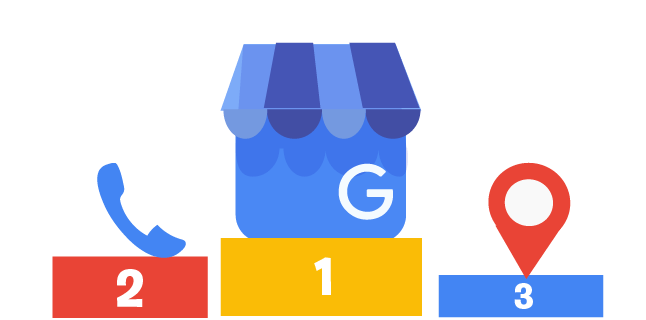
There are several local SEO ranking factors which can make or break your visibility in local searches.
They’re easy enough to satisfy and doing them can make the difference between ranking on page three and ranking at the top of page one.
Out of all the local SEO factors which exist, these are the most important ones which make the biggest difference and can catapult you to the top of Google’s search engine results pages:
1. Google My Business category association
It comes as no surprise that Google’s very own My Business page is at the top of the list, as the most important local SEO ranking factor.
On Google My Business, you need to ensure that you are using the right categories for your local business. If you don’t select the right business category, you’re going to rank for the wrong business type.
In other words, if you run a beauty salon then don’t pick the “legal services” category. It sounds obvious enough, but you will be surprised how many people pick the wrong category either out of negligence or laziness.
If you’re not sure which category best suits your business, why not take a look at your closest competitor and see what they categorise themselves as?
2. Consistent citations across the internet
Local business citations form a core part of local SEO, and you need to be consistent with them in order to maximise their SEO value.

Citations are basically any mention of a company’s name, address or telephone number anywhere on the internet. These include mentions on social media, apps and websites. Citations are what help the end-user find out information about you.
Before you start optimising for local SEO, you need to decide on one business name, one business address and one phone number. Use this information consistently everywhere, without deviation. Failing to do so will confuse both the consumer and search engine.
If, for example, your business is called “Mark’s Flower Shop” don’t start referring to yourself as “Flowers By Mark” on any of your content. This is inconsistent and destroys your SEO value.
3. Having a central physical location
Every town, city and region has its own central point in Google called the “centroid.” And, the closer you are to the centroid, the better you will perform in local SEO rankings.
Although this is not a factor which you have little control over, it is something to keep in mind. Especially if a) you do not yet have a physical location or b) you are considering moving in the future.
Even if you don’t have a physical location or there is no way you can centralise yourself, you can rent “virtual office space” or business mailboxes, and use these as your company’s address. This is one way to skirt around the physical location problem.
4. Using your location’s name
After all, it is local SEO!
You want to be using your town or city’s name everywhere you can. Use it in title tags, headings, image file names, meta descriptions, URLs and throughout your content.
If you aren’t using your town or city’s name then people who are specifically searching for something in your location are not going to find you as easily, even if your Google My Business information is fully up-to-date.
One way to do this is to utilise keywords and include your town or city’s name in them. Just make sure you do so in a way which makes sense and isn’t spammy.
5. Having authoritative backlinks
Building a strong backlink portfolio is not just a great way to improve your general SEO. It can work wonders for local SEO too.

With inbound links, quality is the most important consideration. When building a backlink portfolio, it can be tempting to associate yourself with lower quality (spammy) websites just to get something out there.
But this could cause damage to your website’s rankings in the long-term. You could even be preventing yourself from ranking entirely.
Instead, you should always prioritise getting links from authoritative websites which are related to your business. It can be a time-consuming process, but it’s well worth it in the end.
Don’t Forget to Optimise Your Website for Mobile!
It’s not just ranking factors you need to be concentrating on when it comes to optimising for local SEO. You also need to ensure that your website is optimised for mobile users.
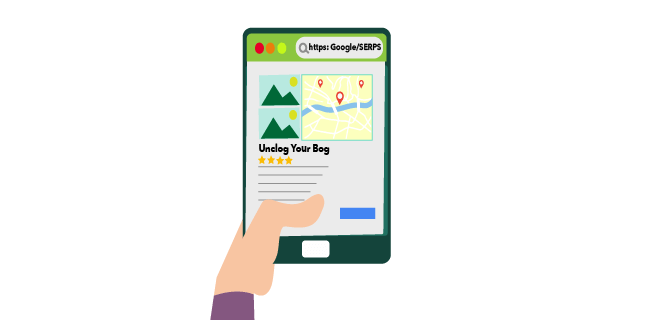
Most local searches are immediate and come from mobile devices when consumers are looking for a specific product or service quickly. Think of the example I shared above with Mike – he needed to find a service quickly through his mobile. This is because he was searching ‘on the go.’ And this is the same for lots of consumers.
It therefore makes sense to fully optimise your website so you can deliver a good user experience and rank for local searches across all devices.
And, with Google having recently launched their Mobile First Index which prioritises auto-optimised sites above those which aren’t in SERPs, it’s now more than ever essential to have a mobile-friendly website.
To put it simply, if you do not have a website which is optimised for mobile, then you will fail to rank highly, if at all.
You can easily check whether your site is optimised for mobile by visiting it from a mobile device. Is it simple to use and navigate? Does the page properly fit your screen? Can you complete simple user journeys like subscribing to a newsletter or purchasing a product?
If a site is hard to navigate, slow on mobile devices and doesn’t automatically resize to fit the screen, it is likely that you haven’t optimised it for mobile.
The good news is that most content management systems such as WordPress usually have an optimised theme. Even so, it is worth checking just to be sure.
Optimising your website for mobile is pretty simple to do. You can score you some easy wins when it comes to local SEO.
Summary
Local SEO optimisation is a must-have if you want your services and products to reach people in the local area.
To really get ahead with local SEO, there are three main things you need to do:
- Optimise your Google My Business details
- Improve your on-page SEO
- Ensure you are meeting local SEO ranking factors
- Make sure your website is mobile friendly for better UX and rankings
Thankfully, these are very easy to implement and you can carry them out right now.
Remember to never just optimise for local SEO. General on-page SEO will give you strong foundations on which to build your local SEO on. Search engines will know you’re an authoritative website and will rank you higher when it comes to providing searchers with relevant brands in the local area.
Incorporate both local and general SEO into your overall marketing strategy for the best chances of reaching more people and increasing conversions.
Local SEO is only going to grow in relevance as more consumers turn to their mobiles for quick, local searches. By optimising your site for local SEO, you can take advantage of this and benefit from local demand.
It can be about how easy to use your website is. How quickly does your customer find what they were looking for? What do they think about your product or service you offer?
Feedback allows you to evaluate your success or failure and take the relevant steps to improve.
Reaching Out to a Marketing Consultant
As I’ve mentioned throughout this article, implementing local SEO is a relatively simple process. However, it can be rather time-consuming depending on exactly how much work needs doing.
This is where being a business owner can become slightly difficult. You need to ensure your site is properly optimised for the local area, however, it takes time to do and your schedule may already be full to bursting.
Reaching out to a marketing consultant like myself may be a better use of your time. When it comes to SEO, my team and I have worked with thousands of clients across industries. We’ve improved rankings and site traffic through clear and actionable local SEO strategy.
If you want to find out how my SEO services could benefit you, feel free to get in contact. We’d be more than happy to have an obligation-free chat about you and your business, as well as your goals for online.


